 One of the most exciting aspects of a classroom teacher’s job is to connect their curriculum to real-world applications. Facilitated by Grow a Generation’s STEM Career Tours, students enrolled in the Introduction to Computer-Aided Design and Drafting course at Cardinal Wuerl North Catholic High School were able to see how their newly acquired skills are put to work in Greater Pittsburgh. This blog will highlight student experiences on the first stop of the STEM tour, Michael Baker International.
One of the most exciting aspects of a classroom teacher’s job is to connect their curriculum to real-world applications. Facilitated by Grow a Generation’s STEM Career Tours, students enrolled in the Introduction to Computer-Aided Design and Drafting course at Cardinal Wuerl North Catholic High School were able to see how their newly acquired skills are put to work in Greater Pittsburgh. This blog will highlight student experiences on the first stop of the STEM tour, Michael Baker International.
Our experience at Michael Baker immediately validated the CADD curriculum at CWNCHS. Students had the opportunity to see the actual models used in the construction and renovation of our roadways. The models were generated using the same computer software we use in the classroom. In fact, the models looked strikingly similar to the types of projects students had been completing throughout the first semester. Although the projects were more robust, drafters had to use the same skills to develop them.
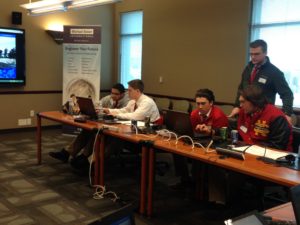
Tiahjure Harp, Zachary Diethorn, Ryan Baranowski, Nicholas Habrle, and Teacher David Yackuboskey from Cardinal Wuerl North Catholic visiting Michael Baker on a STEM Career Tour
Students work with the bridge inspector, training software. Yet another example of computers facilitating the field of transportation engineering.
One of the critiques of the course from one student’s perspective, Landon Pringle – a junior at CWNC, is that the content can be “tedious, and kind of boring.” That same student couldn’t imagine the amount of detail oriented effort if would take to create such a model. When asked for his thoughts, Landon replied, “I don’t think I could be a transportation engineer. I mean it’s cool, but painstaking.” From a teacher’s perspective, it means a lot to see that the skills used in the classroom are necessary in the work place. Being able to reveal that to a student is what teaching is all about, even if they realize this particular career field doesn’t fit their skill set.
The CADD curriculum at CWNCHS emphasizes the capability of computers to increase, Precision, Efficiency, and Communication in the design process. Of these three, Efficiency in the field of transportation engineering, was on full display at Michael Baker International. Representatives showcased Michael Baker’s very own software that automates computer generated renderings of bridge cross-sections. By simply inputting a few dimensions that are specific to the project, a drafter can efficiently compile a set of drawings to be quality checked by an engineer. A second tool Michael Baker highlighted was bridge inspection, training software. Students used the same software bridge inspectors are trained with to examine a virtual bridge; they navigated an environment, selected tools and analyzed structural concerns. While this not a drafting application it is a prime example of using computers to increase efficiency in the field of transportation engineering. 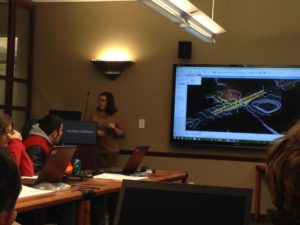
All in all, the time spent with Michael Baker International enriched the classroom experience. CWNCHS is grateful for the opportunity to team up with STEM Career Tours and provide this trip for our students.
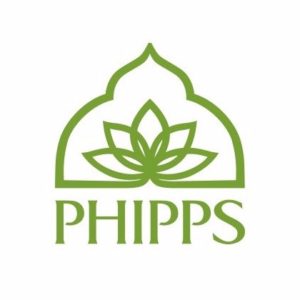 ovember 17th Mrs. Steiniger’s Biology class from Cardinal Wuerl North Catholic High School toured the Center For Sustainable Landscapes at Phipps Conservatory, as part of Sustainability Stem Career Tour. The Center For Sustainable Landscapes is one of the greenest buildings in the world, meeting the requirements of the Living Building Challenge the strictest classification for a green building project.
ovember 17th Mrs. Steiniger’s Biology class from Cardinal Wuerl North Catholic High School toured the Center For Sustainable Landscapes at Phipps Conservatory, as part of Sustainability Stem Career Tour. The Center For Sustainable Landscapes is one of the greenest buildings in the world, meeting the requirements of the Living Building Challenge the strictest classification for a green building project.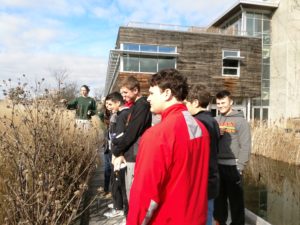
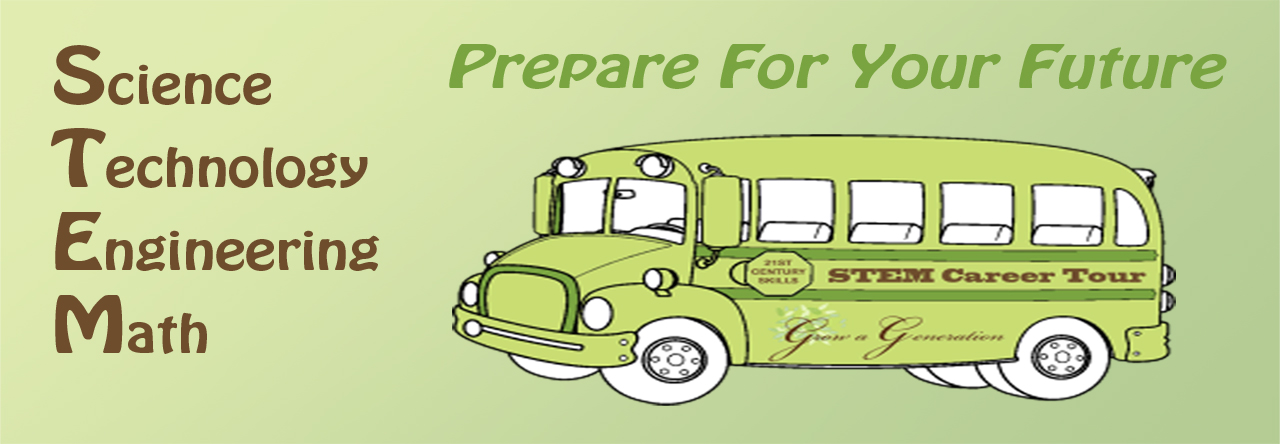
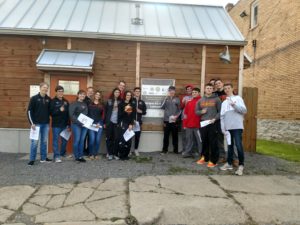 My name is Tim Roos, I’m a sophomore at North Catholic, and I recently went on the sustainability field trip at North. On the field trip, we stopped at the Oasis Farm Fishery in Homewood. The main topic of the tour as sustainability, and how Oasis has incorporated it into its function. Homewood is what is considered a food desert, which is an area that has no access to fresh fruits or vegetables.
My name is Tim Roos, I’m a sophomore at North Catholic, and I recently went on the sustainability field trip at North. On the field trip, we stopped at the Oasis Farm Fishery in Homewood. The main topic of the tour as sustainability, and how Oasis has incorporated it into its function. Homewood is what is considered a food desert, which is an area that has no access to fresh fruits or vegetables.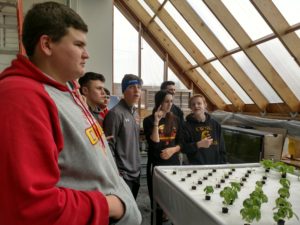 ed sustainable agricultural practices such as aquaponics, but I know so much more now that I went to Oasis Farm Fishery. For instance, I didn’t know that you want the roots of plants to be white, which shows that there is a good amount of oxygen present. Oasis Fishery is using the most with what they’ve got. If the temperature becomes too hot in the greenhouse, they cover the sides with a metal-mesh cover, that reflects 50% of the sunlight and warmth, so the vegetables don’t fry to death. Every so often insects enter the greenhouse and eat away at the crops. Once Casey notices the insect problem, he will introduce a predator to the greenhouse. For example, if aphids are the problem, he would introduce ladybugs.
ed sustainable agricultural practices such as aquaponics, but I know so much more now that I went to Oasis Farm Fishery. For instance, I didn’t know that you want the roots of plants to be white, which shows that there is a good amount of oxygen present. Oasis Fishery is using the most with what they’ve got. If the temperature becomes too hot in the greenhouse, they cover the sides with a metal-mesh cover, that reflects 50% of the sunlight and warmth, so the vegetables don’t fry to death. Every so often insects enter the greenhouse and eat away at the crops. Once Casey notices the insect problem, he will introduce a predator to the greenhouse. For example, if aphids are the problem, he would introduce ladybugs.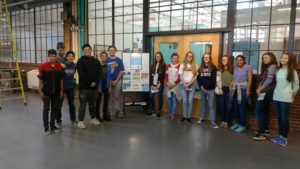

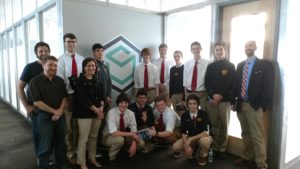 On Friday, February 17th, 2017, several North Catholic students began their venture into the Computer Science field with a visit to ContainerShip. Found in Oakland Pittsburgh, ContainerShip is a Multi-Cloud Automated Server, in other words ContainerShip gets rid of the hassle and brings anything you could desire onto the Internet and into the public’s hands.
On Friday, February 17th, 2017, several North Catholic students began their venture into the Computer Science field with a visit to ContainerShip. Found in Oakland Pittsburgh, ContainerShip is a Multi-Cloud Automated Server, in other words ContainerShip gets rid of the hassle and brings anything you could desire onto the Internet and into the public’s hands.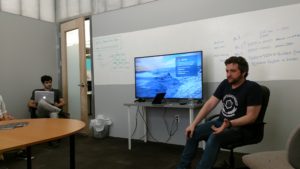 Phil Dougherty explained how there is traffic when it comes to the Internet, sometimes a website may undergo millions of visits from different users in a sort of rush hour sense while on the contrary the same website may experience times when there is no one on their website. ContainerShip aids in traffic control by opening up more servers and connections like roads for the traffic to go through so the website or app can maintain peak performance.
Phil Dougherty explained how there is traffic when it comes to the Internet, sometimes a website may undergo millions of visits from different users in a sort of rush hour sense while on the contrary the same website may experience times when there is no one on their website. ContainerShip aids in traffic control by opening up more servers and connections like roads for the traffic to go through so the website or app can maintain peak performance. One of the most gratifying moments for a teacher is to see students engaged in purposeful wonder. I saw this in my students’ interaction with James Mauler and Travis Johnson, the president and vice president of Cadnetics respectively. Facilitated by STEM Career Tours, students enrolled in the Introduction to Computer-Aided Design and Drafting (CADD) course at Cardinal Wuerl North Catholic High School were able to see how their newly acquired skills are put to work in Greater Pittsburgh. This blog will highlight student experiences on the final stop of the STEM tour, Cadnetics.
One of the most gratifying moments for a teacher is to see students engaged in purposeful wonder. I saw this in my students’ interaction with James Mauler and Travis Johnson, the president and vice president of Cadnetics respectively. Facilitated by STEM Career Tours, students enrolled in the Introduction to Computer-Aided Design and Drafting (CADD) course at Cardinal Wuerl North Catholic High School were able to see how their newly acquired skills are put to work in Greater Pittsburgh. This blog will highlight student experiences on the final stop of the STEM tour, Cadnetics.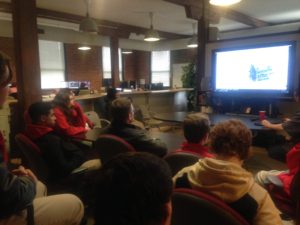 The use and application of technology captured students’ attention during our visit with James and Travis. They witnessed a laser scanner render a three-dimensional model of the room they were in. The model was created and could then be manipulated using similar CADD software to what we use in the classroom. Of course, I had to deflect questions like, “why don’t we have a laser scanner at school,” and “why can’t we make models like this!” But, these questions reflect a level of interest and engagement I had not seen in the classroom.
The use and application of technology captured students’ attention during our visit with James and Travis. They witnessed a laser scanner render a three-dimensional model of the room they were in. The model was created and could then be manipulated using similar CADD software to what we use in the classroom. Of course, I had to deflect questions like, “why don’t we have a laser scanner at school,” and “why can’t we make models like this!” But, these questions reflect a level of interest and engagement I had not seen in the classroom. One of the most exciting aspects of a classroom teacher’s job is to connect their curriculum to real-world applications. Facilitated by Grow a Generation’s STEM Career Tours, students enrolled in the Introduction to Computer-Aided Design and Drafting course at Cardinal Wuerl North Catholic High School were able to see how their newly acquired skills are put to work in Greater Pittsburgh. This blog will highlight student experiences on the first stop of the STEM tour, Michael Baker International.
One of the most exciting aspects of a classroom teacher’s job is to connect their curriculum to real-world applications. Facilitated by Grow a Generation’s STEM Career Tours, students enrolled in the Introduction to Computer-Aided Design and Drafting course at Cardinal Wuerl North Catholic High School were able to see how their newly acquired skills are put to work in Greater Pittsburgh. This blog will highlight student experiences on the first stop of the STEM tour, Michael Baker International.
